Why you should branch into interior design
Sarah McCall explains why interior design is about so much more than lavish curtains and pretty cushions.
Before you go writing interior design off as an occupation that merely involves throwing fluffy cushions about a room and painting the walls outrageous colours, interior architectural designer and founder of Ongl Design+Make, Sarah McCall, says it's an art of shaping spaces into places that are functional and beautiful. It's more than just decorating, it's having that awareness of how spaces are to be used and experienced.
A business that turns ideas into spaces people want to spend time in, Ongl Design+Make is a creative and collaborative studio of designers and makers. The company has a range of impressive projects under its belt, including creating set props for the West End musical adaptation of Roahl Dahl's Charlie and the Chocolate Factory and a number of beautifully quirky shop, bar and café interiors.
So here's why McCall thinks you should give interior design some serious consideration...
01. Interior design is about so much more than curtains and cushions
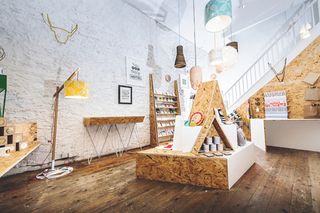
Before even reaching the point of selecting furnishings, a whole host of considerations have to be processed, rationalised and tested through sketching, model making and technical drawing. You have to consider who the users, customers or clients are going to be, what products or services are going to be offered and what equipment and belongings need accommodating.
"By using floor plans, sections and elevation drawings," says McCall, "or more often than not carrying out a survey ourselves and drawing them up on a CAD program, we look at different options and configurations based on circulation, zoning, spatial sequencing, sight lines, vertical unification and horizontal connection thinking.
"We also analyse the given site or premises in terms of macro and micro contexts, looking at environmental factors such as levels of natural light and ventilation penetrating the space, the space's presence on the street, accessibility, visibility and connection with the outdoors, proximity to other spaces or premises, as well as observations of daily footfall, demographic and social culture."
So not much to think about! After all the objective work comes the subjective part, where visual examples are produced. Then comes the discussion over materials, atmosphere, approaches to storage, display, spatial boundaries, colour and the like, which all aid the development of the drawings and 3D models. And finally, once all this has been rigorously planned and discussed, comes time to talk detail. Furniture, fixtures, equipment, carpentry, painting, lighting, doors, the list goes on.
Get the Creative Bloq Newsletter
Daily design news, reviews, how-tos and more, as picked by the editors.
"Then and only then do we consider curtains and cushions," says the founder of Ongl. "If at all! Ask any commercial interior designer where they stand on curtains and cushions. Blinds will always win over curtains. And cushions must be present for functional beauty and not just to accessorise."
02. You have the ability to influence people's actions, reactions and behaviours
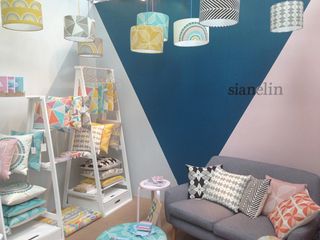
For instance, encouraging customers to feel welcome and comfortable in a coffee shop, inspiring customers to want to buy from a gift shop, stimulating a happy, healthy and productive work environment, nurturing a social atmosphere in a bar, or instigating interaction at an exhibition. For McCall, there's no one who sums up what good design means better than Steve Jobs.
"In most people's vocabularies, design means veneer. It's interior decorating. It's the fabric of the curtains or the sofa. But to me, nothing could be further from the meaning of design. Design is the fundamental soul of a human-made creation that ends up expressing itself in successive outer layers of the product or service."
03. Showcase your products and services in their best light
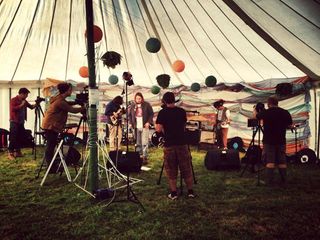
If done well, interior design has the capability of showcasing your products, skills and services in their best light. Living in a highly visual society, interior design gives you an amazing platform from which to display your best work.
But the market is competitive. So creating well designed interior spaces – in terms of functionality, memorability, health and wellbeing – can be make or break for a venture, because at the end of the day you want people to want to come in and use it.
04. It's great fun!
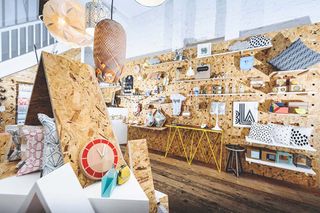
As an interior designer you get to explore, experiment with, touch, feel, pick and choose all sorts of materials, fixtures, fittings, lighting, furniture, accessories, systems, and and and... And combining them into a resolved and refined interior design composition that can be used and enjoyed is a hugely satisfying way to make a living.
05. It becomes your way of life
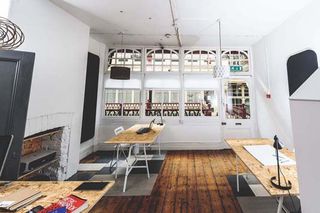
"Being in the design industry is a way of life, whether that's interior design, architecture or otherwise," says McCall, "because we're surrounded by design every day and as human beings, we can't help but be inspired by what we see. Even if we don't like what we see, we can still be inspired by it, because it helps us to ponder what we could do to make it better."
And in the words of Herbert Simon, "Everyone designs who devises courses of action aimed at changing existing situations into preferred ones."
McCall's 5 top tips to get into interior design

- Whether or not you studied art and design at school, go do an FE Foundation Diploma in Art and Design. It will be the most creative, experimental and enjoyable year of education you will ever take. You'll start looking at things differently and be spurred on to challenge your creative boundaries, whether through the medium of interior design or otherwise.
- Do your research before picking an interiors degree course. Where does your interest lie? Are you more interested in surface pattern and colour combinations, architectural interventions, 3D installations, or a combination of them all? Then pick the course that matches your interests.
- While studying, arrange some work experience with various practices to get a feel for the different sectors of interior design. There are loads, from hospitality to leisure, to retail, to healthcare, to education, to residential and exhibition. It could help give your studies more focus and direction in terms of your end goal, whether that be employment or self-employment.
- Network, network, network! You can never do enough and you never know. You may end up landing your first job or commission.
- Set up a Pinterest account so you can pick up inspiration wherever you go. It will help you keep up with interior design trends, new products and more than anything, it will help you visually define what you're about as a designer.
If you want to be inspired by Ongl Design+Make, follow them on Twitter, Facebook, Pinterest and Instagram.
Words: Margaux Doey
Margaux Doey is a freelance journalist, blogger and winner of the PPA Magazine Academy's New Digital Product Concept 2013. Follow her on Twitter and read her blog on Outdoor Chics.
Like this? Read these...
- The designer's guide to working from home
- Free graphic design software available to you right now!
- Illustrator tutorials: amazing ideas to try today!

Thank you for reading 5 articles this month* Join now for unlimited access
Enjoy your first month for just £1 / $1 / €1
*Read 5 free articles per month without a subscription

Join now for unlimited access
Try first month for just £1 / $1 / €1
The Creative Bloq team is made up of a group of design fans, and has changed and evolved since Creative Bloq began back in 2012. The current website team consists of eight full-time members of staff: Editor Georgia Coggan, Deputy Editor Rosie Hilder, Ecommerce Editor Beren Neale, Senior News Editor Daniel Piper, Editor, Digital Art and 3D Ian Dean, Tech Reviews Editor Erlingur Einarsson, Ecommerce Writer Beth Nicholls and Staff Writer Natalie Fear, as well as a roster of freelancers from around the world. The ImagineFX magazine team also pitch in, ensuring that content from leading digital art publication ImagineFX is represented on Creative Bloq.
